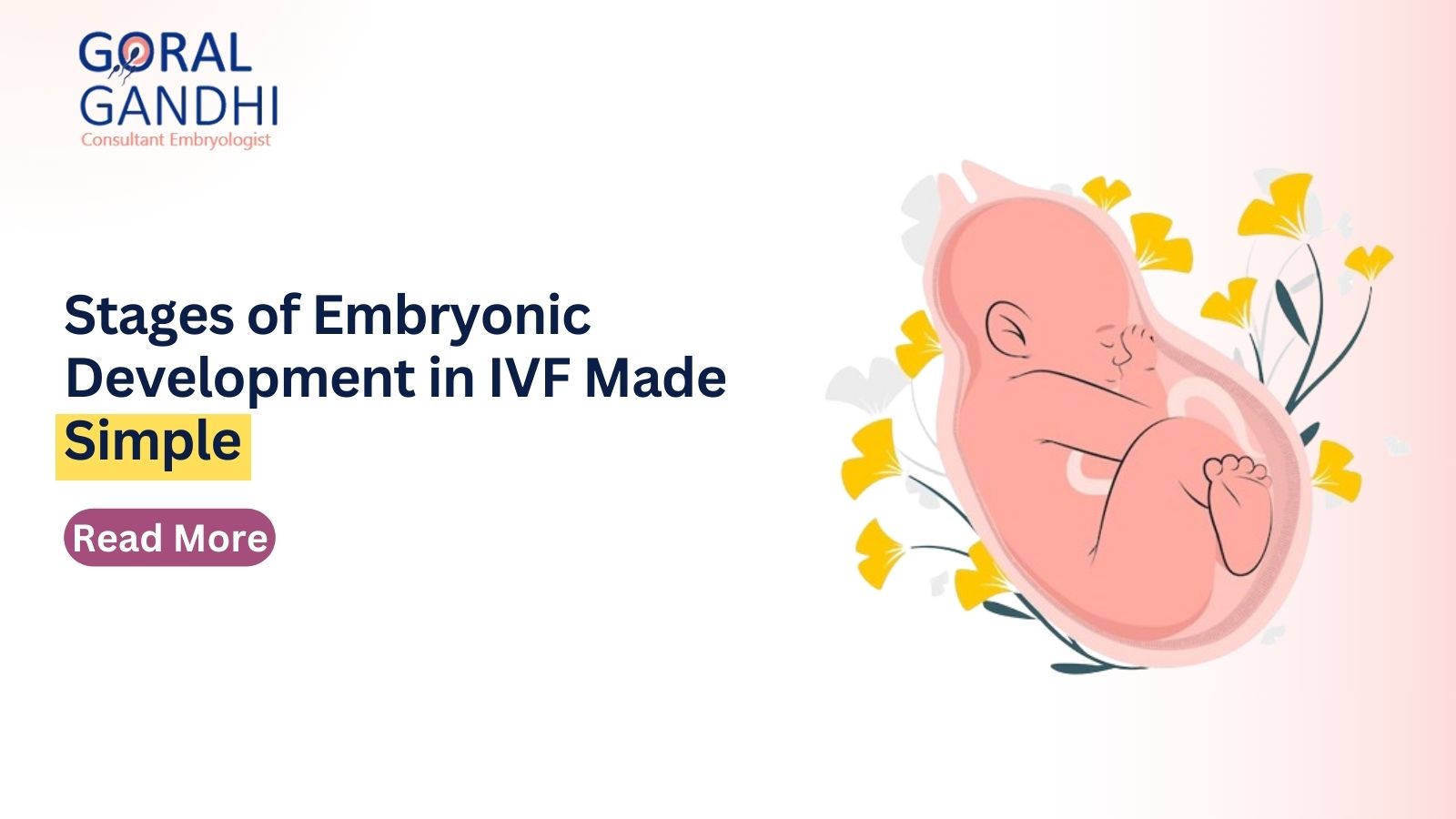

E-Brochure - Download Now!


Stepping into the journey of being a parent through IVF opens many hopeful doors of the fascinating stages of embryonic development. The latest data reflects an estimate of 27.5 million Indian couples battling infertility issues. While the stages of embryo development are successful, they come with challenges. Hence, creating a healthy embryo is crucial for the happiness of both parents and the doctors.
Starting out on the IVF journey can be daunting for many couples. A consultation session provides clarity and mental support. While every individual’s path to parenthood is unique, this article provides a generic overview of the four stages of embryonic development through IVF, giving you an insight into the magic that happens in the lab.
Oocyte Retrieval is the first process in the stages of embryonic development. It starts with the retrieval of mature eggs called the oocytes from the female partner's ovaries. It is done through hormonal stimulation and ultrasound monitoring to induce the development of multiple eggs. Once the eggs reach maturation, they are carefully extracted from the ovaries.
These eggs are combined with sperm in a controlled laboratory environment, facilitating fertilisation. This pivotal moment marks the beginning of embryonic development. The fertilised eggs are monitored closely over the next 18 to 24 hours to observe pronuclei formation, indicating successful fertilisation. However, like every medical procedure, embryonic development in IVF may face some complications too like:
Issues During Stage 1: Oocyte Retrieval and Fertilization-
Once fertilisation is done, the zygote undergoes many rapid divisions called the cleavage. The single-cell zygote transforms into a multicellular entity, forming a morula structure. During this stage, the embryonic cells continue to divide without a corresponding increase in size, creating a compact cluster of cells.
The morula is a precursor to the blastocyst, the stage at which the embryo implants into the uterine lining. Around day three of development, the morula typically consists of 16 to 32 cells, setting the stage for the next critical phase. This critical phase may face some challenges as mentioned:
Issues During Stage 2: Cleavage and Formation of the Morula-
As the morula progresses, a fluid-filled cavity forms within the cluster of cells. This transformative process leads to the formation of a blastocyst, characterised by two distinct cell types – the inner cell mass (ICM) and the trophectoderm. The ICM gives rise to the future embryo, while the trophectoderm contributes to forming the placenta and supporting tissues.
Around day five or six post-fertilization, the blastocyst is deemed ready for transfer or cryopreservation. The blastocyst's ability to develop into a healthy pregnancy is a critical factor in the success of IVF procedures.The success might face issues because of the following issues:
Issues During Stage 3: Blastocyst Formation-
Upon successful transfer into the uterus, the blastocyst begins implantation into the uterine lining. This involves the attachment and invasion of the blastocyst into the receptive endometrium. Following implantation, the embryonic cells continue to differentiate and organise, marking the commencement of early foetal development.
While the IVF laboratory plays a crucial role in nurturing the embryo through the initial stages, the ultimate success of the IVF journey relies on the health and receptivity of the uterus. A synchronised interplay of hormonal cues and cellular signals orchestrates the delicate dance of embryonic development within the womb. We may encounter some challenges during this stage as well.
Issues During Stage 4: Implantation and Early Development-
It's essential to note that these issues highlight potential challenges with advancements in assisted reproductive technologies, and careful monitoring aims to address and mitigate these concerns during each stage of embryo development.
Following the completion of a blastocyst embryo transfer, it takes approximately nine days before pregnancy detection becomes possible. In the days after the transfer, the embryo undergoes the following transformations:
In conclusion, understanding the four stages of embryonic development through IVF provides a glimpse into the complexity and precision involved in assisted reproduction. Each stage requires meticulous care and expertise, from the initial fusion of gametes to the formation of a blastocyst ready for implantation.
As science and technology continue advancing, the pursuit of refining and enhancing these processes remains steadfast, offering hope to individuals and couples striving to build their families through the marvels of IVF. Schedule a consultation with Dr. Goral Gandhi, a leading clinical embryologist and fertility consultant in Mumbai, who is well-versed in the intricacies of fertility treatments. Allow us to be your guide, addressing your concerns and providing you with the expert insights you seek. Contact us and schedule a complimentary consultation with us today. Let's collaborate to turn your dreams of parenthood into a joyous and fulfilling reality.